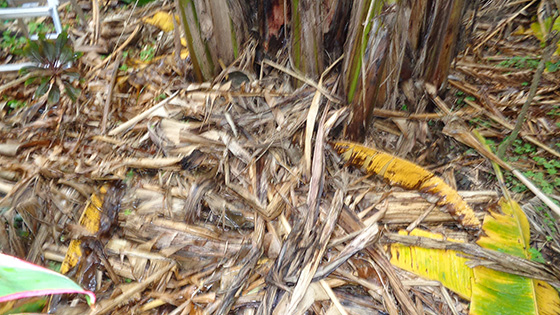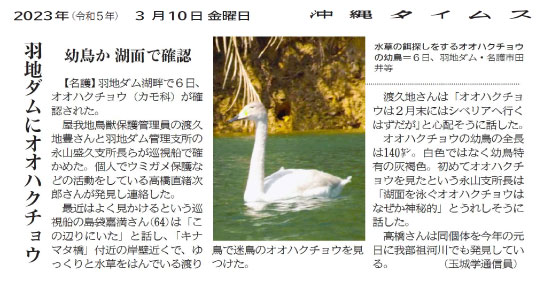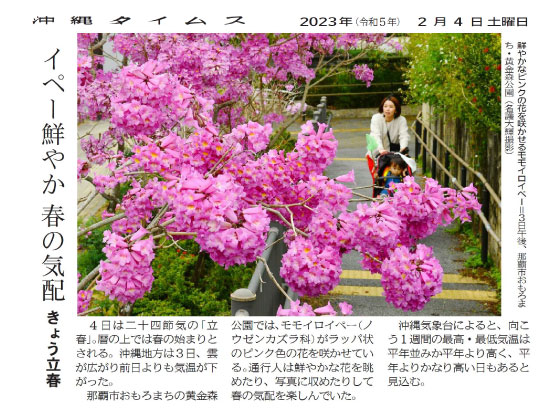The efforts made everyday at the Blue-Sky Palace have several aims: to make it easier to maximize the use of no-tillage, as well as smooth the way for continuous cultivation and ecological space and the ultimate creation of revitalizing space easier.
As I mentioned in the previous article, the idea is to utilize the atomic conversion power of EM to convert salt into fertilizer, and to continually manage the increase of EM DNA in the soil.
It is essential to treat any organic matter, including food waste, manure, etc., so that EM can increase, and to always return it to the soil. In conventional farming, we normally use EM when growing crops, but if we want an improvement in the ecological space, it is important to plant something in the entire area, including areas not devoted to crops, return organic matter to the soil, and continue to apply activated EM seawater solution. Doing this will enhance the atomic conversion power of the soil as a whole, and produce phenomenon that go far beyond what conventional wisdom would expect.
What we are currently working on is the permanent planting mass method. As shown in the photos, a 20-30 cm hole is dug, 100-150 g of salt and 500 ml of EM Gravitron Charcoal are placed in the hole, and 500 ml of activated EM solution is added on top, and 10-15 cm of soil is added back. Fruit and vegetable crops such as tomatoes, eggplants, and cucumbers are then planted on top of this. Lettuce and other vegetables should be planted at the base of the plants to fully utilize the space, as shown in Photo #8, “Lettuce and tomatoes on the left side of the entrance,” as shown in the previous article.

Dig a 20-30 cm hole in a non-field area, add 100-150 g of salt and 500 ml of EM Gravitron Charcoal, and apply 500 ml of activated EM.

Left: Stones from the hole
Right: Permanent planting mass method with soil returned. It is possible to plant even in such a stony soil.

Planted an eggplant and put a little Bokashi around the plant

1. Dig a hole using a shovel or pickaxe. Adjust the diameter of the hole according to the plants to be planted. Add 100 to 150 g of salt, 500ml of EM Gravitron Charcoal, and apply 500ml of activated EM solution (1:100 diluted solution) on top.
2. Put soil back into the planting hole (to a depth of about 15 to 20 cm)
3. Plant the plant and fix the dug-out soil firmly around the roots. Finally, sprinkle a thin layer of EM Bokashi Type II on the surface.
A permanent planting mass can be made anywhere at any time, with the soil functioning like a Kekkai (boundary) under it. After the harvest is over, spread the residue around, apply 1-2 liters of activated EM seawater to the planting mass, leave it for a few days, thoroughly irrigating it, and then plant the next crop. As the number of permanent planting masses increases, the field’s Kekkai power also increases. At the same time, if we manage to constantly increase the level of EM DNA, the space will function to cleanse everything in the environment, and we will have the finest produce to enhance human health, and as much of it as we want.

Tomatoes in the second crop of permanent planting mass (the previous crop was bitter gourd)

The surface of the banana field is covered with the removed lower leaves and harvest residue (fermented liquid fertilizer is applied to the base of the plant four to six times a year)

It grew so much that people mistake it for a different variety

Yunnan Hyakuyaku, Anredera cordifolia, growing on a stump

Keeping a line of supports in the open space allows the Anredera cordifolia to be harvested all year around.

Because of all the stones around them onions grow large above ground.
In Okinawa, the period from February to March of the lunar calendar is called “Urizun”, a very pleasant season with an average temperature of around 20 degrees Celsius. Trees in the mountains are a brilliant green, and there are flower festivals and other events held in various parts of the prefecture, and flowers are in full bloom everywhere. This will be the second year I have presented news reports of flowers published in local newspapers, which I first introduced in the 158th edition of this magazine (March 2021). Year after year, newspapers are full of news about the vivid flowers in parks, the flowering trees, and trees along roadsides. I introduce these as a record of the post-EM Graviton boundary, Kekkai, in the Ryukyu Islands.

Okinawa Times, Monday, February 6, 2023
A member of the agave family that is often seen as blooming only once every decade or so, for some reason are in full bloom in the parking lot of Naha Airport-February, 5th (Photo by Masao Tajima)

Flame vine blooming on a shelf covering a spring water channel, in Yoza, Itoman City, on March 23rd. (Photo by Masao Tajima)
Okinawa Times, Wednesday, March 1,
Scarlet flowers coloring the Yoza-ga, the spring water channel in Itoman City
Yoza-ga in Itoman City has been a valuable source of water for the community. Brightly colored flowers of the Kaen Kazura, Flame Vine, brighten the shelves that cover the spring water channels. The flowers’ blazing scarlet color makes it stand out against the surrounding greenery and blue sky. Taking advantage of the abundant water, the park has a children’s pool and staircase-style waterfall. The park retains its old-fashioned atmosphere and has become a place local residents go to relax. In summer, the park is crowded with children and their parents who come to cool off. The sound of the water flowing down the steps and the wind blowing in the breeze will help you forget the hustle and bustle of the city and return you to your childhood. (Photo by Masao Tajima)

A Juvenile whooper swan searching for waterweeds at Haneji Dam, in Taira, Nago City
Okinawa Times, Friday, March 10, 2023
A whooper swan (duck family) was confirmed at the lakeside of Haneji Dam in Nago City, Okinawa Prefecture on March 6th. Yutaka Toguchi, a Yagaji Wildlife Conservation manager, and Morihisa Nagayama, director of the Haneji Dam Management Branch and others confirmed the sighting from a patrol boat. Naojiro Takahashi, who is personally engaged in activities such as protecting sea turtles, discovered the hooper swan and contacted them. Yoshimitsu Shimabukuro, 64, a member of the patrol boat who often sees the hooper swans these days, said, “It was around here,” and found a migratory whooper swan that was slowly foraging for water plants near the quay near the “Kinamata Bridge” Mr. Toguchi was concerned about the timing: “The whooper swans are supposed to leave for Siberia by the end of February,” he explained.The total length of the juvenile whooper swan is 140 centimeters. It is not white, but grayish brown, a color characteristic of juvenile swans. The branch director, Mr. Nagayama, who saw the whooper swan for the first time, happily said, “It’s a bit mysterious to see a whooper swan swimming on the surface of the lake.” Mr. Takahashi also found the same bird on New Year’s Day of this year at the Gabusoka River. (Reported by Manabu Tamaki)

Jade vine with bright emerald green flowers blooming at Okinawa World in Tamaki, Nanjo City on April 22nd. (photo by Ken Komiya)
Okinawa Times, Thursday, March 23, 2023
On March 22nd, it was a summer day in various parts of Okinawa region. Moriyama in Ishigaki City had the hottest temperature at 28.4 degrees Celsius, while Naha City recorded 26.3 degrees Celsius. Nineteen of the twenty five observation sites recorded their highest temperatures of the year. The bright emerald green Jade vine at Gyokusendo in Okinawa World Culture Kingdom, located in Tamaki, Nango City, are in full bloom. Mr. Shun Karimata, 21, and Keika Oshiro, 22, said, as they took pictures, “This was the first time we’ve seen it. The color is fantastic.” According to the facility, they can be seen until around the latter half of April.

The yellow flowers of the Ipe against the blue sky on the afternoon of the 26th in central Okinawa City. (Photo by Masao Tajima)
Okinawa Times, Monday, February 27, 2023
Yellow Ipe (Japanese name: Kogane nouzen) are blooming brightly on Health Center Street and Chuo Park Avenue in the central area of Okinawa City. On the 26th, when the weather cleared up, passers-by enjoyed the sight pf the yellow flowers shining in the sunlight against the blue sky. The 26th was a chilly day in Naha with a maximum temperature of 17.9 degrees Celsius. The lowest temperatures recorded on that day were 11.6 degrees in Kunigami Village Oku, 11.8 degrees in Itokazu, Nanjo City, and 14.6 degrees in Naha. The Okinawa region on the 27th is mostly cloudy, with occasional rain.

Mayflowers in full bloom under a blue sky at Ikoi no Shimin Park in Ginowan, Ginowan City, on the afternoon of June 5th. (Photo by Daiki Nago)
Okinawa Times, Tuesday, March 7, 2023
On March 6th, a high-pressure zone and clear skies covered the Okinawa region. The weather was pleasant, with high temperatures exceeding 20 degrees Celsius in various areas. May flowers are in full bloom at Ikoi no Shimin Park in Ginowan, Ginowan City. Another name for these is “fubuki-bana” because of the series of grain-like flowers. The light purple color along the promenade is a beautiful sight for visitors to the park. One woman who lives nearby took a picture of the flowers, commenting that, “There are lot more flowers than last year. It’s so relaxing and makes me happy.”

Ipe rosa with bright pink flowers in Koganemori Park, Omoromachi, Naha City, on the afternoon of March 3rd. (Photo by Daiki Nago)
Okinawa Times, Saturday, February 4, 2023
Today is Risshun.
The 4th is the 24th solar term “Risshun”. According to the calendar, it marks the beginning of spring. On the 3rd, the Okinawa region grew cloudy and the temperature was lower than the previous day. At Koganemori Park in Omoromachi, Naha City, Ipe rosa (Bignoniaceae), trumpet-shaped pink flowers, were in full bloom. Passersby enjoyed the signs of spring by gazing at the bright pink flowers and taking pictures of them. According to the Okinawa Meteorological Observatory, the maximum and minimum temperatures for the next week are expected to be at or above normal, with some days much higher than normal.

Workers taking care of the azaleas in preparation for the opening of the “Azalea Festival” at the Azalea Garden in the Village People's Forest in Higashi Village on February 28th.
Okinawa Times, Wednesday, March 1, 2023
Festival starts on the 1st in Higashi Village, Okinawa.
The 41st Higashi Village Azalea Festival starts at the Azalea Garden in the Village People’s Forest on the 1st. Visitors can enjoy over 50,000 azaleas of seven varieties, including Kerama azalea. Currently, the flowers are in 20% in bloom and will be at their best from next week on ward until March 21. On February 28, the red, pink and white flowers were bathing in the warm sunshine, while Okinawa rails were chirping.
Mr. Takuya Kamiya of the Higashi Village Planning and Tourism Division said, “The timing of when they bloom differs according to the variety. I hope people will enjoy the various colors during the period of the festival,” he said. Food and beverage stands, which had been canceled due to the coronavirus, and stage events on weekends and holidays, will return for the first time in three years.
The park is open from 9:00 am to 5:00 pm (last entry at 4:00 pm). Admission fee is 300 yen for high school students and older. Admission is free for junior high school students and younger. (Kenta Kinjo, Northern Press Dept.)

Okinawa Times,Thursday, February 26, 2023
At a private house in Gabusoka, Nago city
The bright orange flowers of the Flame vine (Bignoniaceae) are blossoming around the residence of a private house in Gabusoka, Nago City (See photo), delighting the eyes of drivers and passers-by. The vines are about 150 cm tall and spread to a length of about 10 meters. The flowers are long and slender, about 7 cm in length. The cylindrical corolla has five curved lobes at the tip.
Miyako Miyagi, 73, who lives in the same district, planted the seedlings six years ago. “I haven’t done any maintenance, but the fertilizer I gave to the plants in the house may have been excellent. Flowers started to appear three years ago, and this year they started blooming at the beginning of the year,” he said. (Reported by Manabu Tamaki)
Read the original Japanese message at the link below.
2023.6.1 Updated.